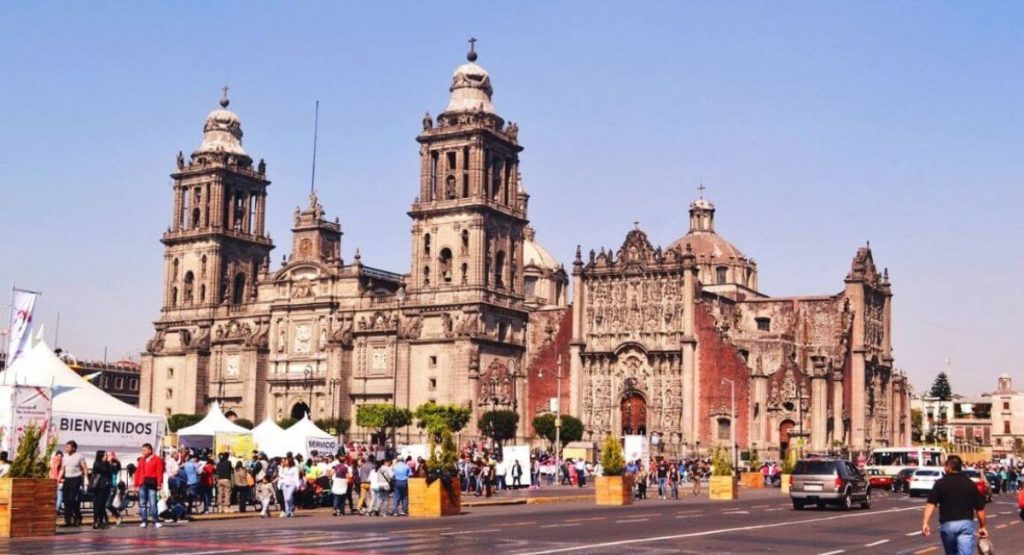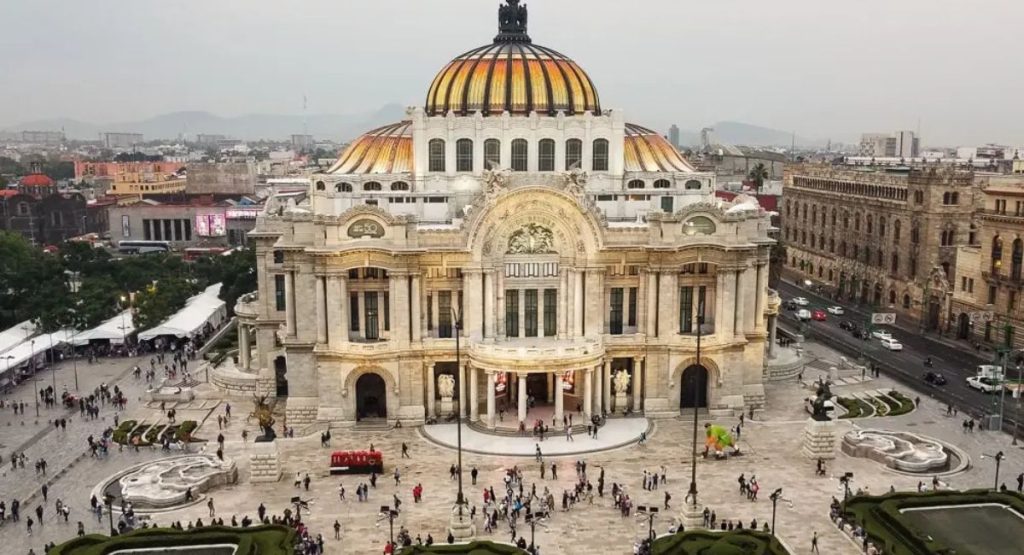Introduction: A Heartbeat Under Your Feet
Have you ever visited a place where every street corner feels like it has a story to tell? That’s exactly the experience of the Mexico City Historic Center. Known Things to Do in Fascinating Mexico City Historic Center: Insider’s Guide to Explore Like a Locallocally as the Centro Histórico, it’s the vibrant heart of the Mexican capital, where ancient Aztec temples meet colonial cathedrals, and bustling plazas blend with hidden markets.
In this guide, you’ll discover not just things to do in fascinating Mexico City Historic Center, but how to explore it in a way that leaves you feeling connected to centuries of history, culture, food, and art. Whether you’re visiting for one day or a full week, this article will help you experience the city like a well-prepared traveler rather than a rushed tourist.Things to Do in Fascinating Mexico City Historic Center: Insider’s Guide to Explore Like a Local
What Exactly Is the Mexico City Historic Center?
The Centro Histórico is the oldest part of Mexico City and one of the most important cultural areas in the Americas. It’s a UNESCO World Heritage Site, and for good reason:
- It was once the capital of the Aztec Empire, Tenochtitlan, founded in 1325.Things to Do in Fascinating Mexico City Historic Center: Insider’s Guide to Explore Like a Local
- After the Spanish conquest, colonial buildings were constructed on top of the old city, creating a unique blend of indigenous and European heritage.
- Today, it spans about 9 square kilometers and contains more than 1,500 historic buildings.
Think of it as a living museum where every block has layers of history beneath it.

Why Visit? The Benefits of Exploring Centro Histórico
- Architectural Wonders: From the Metropolitan Cathedral to the Palacio de Bellas Artes, you’ll encounter styles ranging from Aztec ruins to Baroque and Art Nouveau masterpieces.
- Art and Culture Everywhere: Murals by Diego Rivera, performances at plazas, and world-class museums make it an open-air classroom of Mexican identity.
- Food Experiences: Sample everything from street tacos al pastor to traditional hot chocolate with churros.
- Walkable and Immersive: Unlike many sprawling cities, the Historic Center is compact and best explored on foot.Things to Do in Fascinating Mexico City Historic Center: Insider’s Guide to Explore Like a Local
Common Misconceptions About the Historic Center
- “It’s just for tourists.” In reality, thousands of locals shop, work, and eat here every day. The authenticity of street life is what makes it so special.
- “It’s unsafe to walk around.” While Mexico City is huge and like any large city requires awareness, the Historic Center is well-patrolled and full of families, students, and workers.
- “It’s all old ruins.” While history is everywhere, the district is also full of modern cafés, trendy galleries, and evolving cultural spaces.Things to Do in Fascinating Mexico City Historic Center: Insider’s Guide to Explore Like a Local
A Step-by-Step Itinerary: The Best Things to Do
Start at the Zócalo (Plaza de la Constitución)
This is the main square and one of the largest in the world. Watch the massive flag-raising ceremony in the morning or simply take in the atmosphere surrounded by historic buildings.Things to Do in Fascinating Mexico City Historic Center: Insider’s Guide to Explore Like a LocalThings to Do in Fascinating Mexico City Historic Center: Insider’s Guide to Explore Like a Local
Metropolitan Cathedral
Standing proudly on one side of the Zócalo, this is the largest cathedral in the Americas. Its mix of Gothic, Baroque, and Neoclassical architecture tells the story of centuries of construction.
Templo Mayor and Museum
Right beside the cathedral lie the excavated ruins of the main Aztec temple. The museum showcases stunning artifacts like ceremonial masks, sculptures, and offerings unearthed from the site.
Palacio Nacional
Here you’ll find Diego Rivera’s famous murals depicting the history of Mexico. It’s also the seat of the federal government, but visitors are welcome in certain sections.Things to Do in Fascinating Mexico City Historic Center: Insider’s Guide to Explore Like a Local
Stroll Along Calle Madero
This pedestrian-only street connects the Zócalo to the Torre Latinoamericana. It’s lined with shops, cafés, and street performers, making it one of the liveliest avenues in the city.
Casa de los Azulejos (House of Tiles)
An 18th-century palace covered entirely in blue and white tiles. Today it houses a restaurant, but the façade itself is reason enough to stop.
Torre Latinoamericana
Climb (or take the elevator) to the observation deck of this skyscraper for sweeping views Things to Do in Fascinating Mexico City Historic Center: Insider’s Guide to Explore Like a Local of the city. On a clear day, you can see all the way to the mountains.Things to Do in Fascinating Mexico City Historic Center: Insider’s Guide to Explore Like a Local
Alameda Central Park
A historic park perfect for resting your feet. Locals come here to stroll, relax, and enjoy cultural events.
Palacio de Bellas Artes
Mexico’s most iconic cultural building. Inside you’ll find magnificent murals, a museum, and a theater that hosts opera, ballet, and concerts.
Explore the Markets
- Mercado de la Ciudadela: Known for traditional crafts, textiles, and souvenirs.
- Mercado Abelardo L. Rodríguez: Famous for its murals and lively local food stalls.
Niche Museums Worth Your Time
- José Luis Cuevas Museum: Dedicated to modern art, housed in a former convent.Things to Do in Fascinating Mexico City Historic Center: Insider’s Guide to Explore Like a Local
- Interactive Museum of Economy (MIDE): A surprisingly engaging space where economics comes alive for all ages.
Food Stops You Can’t Miss
- El Moro Churrería: Legendary for churros and hot chocolate.
- Street Tacos: Grab tacos al pastor from small taquerías or stands around the center.
- Traditional Cantinas: Step into old-world bars for botanas (snacks) served alongside your drinks.
Mistakes to Avoid
- Rushing through in a single afternoon: You’ll miss the details. Spend at least two full days if you can.Things to Do in Fascinating Mexico City Historic Center: Insider’s Guide to Explore Like a Local
- Skipping small streets: The side alleys often hide the most interesting shops and eateries.Things to Do in Fascinating Mexico City Historic Center: Insider’s Guide to Explore Like a Local
- Not carrying cash: Many street vendors and markets don’t accept cards.
- Ignoring siesta hours: Some smaller shops close in the mid-afternoon. Plan accordingly.
Tips for First-Time Visitors

- Arrive early to popular sites to avoid crowds.
- Wear comfortable shoes—cobblestone streets can be tiring.
- Consider joining a walking tour for insider stories you won’t get from guidebooks.
- Bring water andThings to Do in Fascinating Mexico City Historic Center: Insider’s Guide to Explore Like a Local sun protection, as open plazas can get hot during the day.
Trends and Insights
In recent years, the Historic Center has undergone a revitalization. Old buildings have been restored, new cultural venues are opening, and there’s a growing emphasis on blending modern life with heritage preservation. Visitors today will find a cleaner, livelier, and more accessible Centro Histórico than in decades past.
FAQs
Q: How much time do I need to explore the Historic Center?
A: At least one full day for highlights, but two to three days for a deeper experience.
Q: Is it walkable?
A: Absolutely. Most major attractions are within a short walking distance.Things to Do in Fascinating Mexico City Historic Center: Insider’s Guide to Explore Like a Local
Q: When is the best time to visit?
A: Weekday mornings are ideal to avoid crowds. Evenings bring a lively energy with illuminated buildings.
Q: Is it family-friendly?
A: Yes. Children often enjoy the wide plazas, museums, and lively markets.
Q: Do I need a guide?
A: Not necessary, but guided tours provide rich historical context and often access to hidden corners.Things to Do in Fascinating Mexico City Historic Center: Insider’s Guide to Explore Like a Local
Conclusion: Your Gateway to Mexico’s Soul
The Mexico City Historic Center is more than a collection of monuments—it’s a living, breathing space where centuries coexist. Every bite of food, every mural, every stone plaza offers a window into Mexico’s soul.
Whether you’re standing in awe beneath the Metropolitan Cathedral, tasting tacos on a street corner, or gazing over the city from Torre Latinoamericana, the Centro Histórico guarantees experiences that stay with you long after you leave.
So start with one step, one square, one story—and let the Historic Center of Mexico City unfold its endless layers for you.Things to Do in Fascinating Mexico City Historic Center: Insider’s Guide to Explore Like a Local
